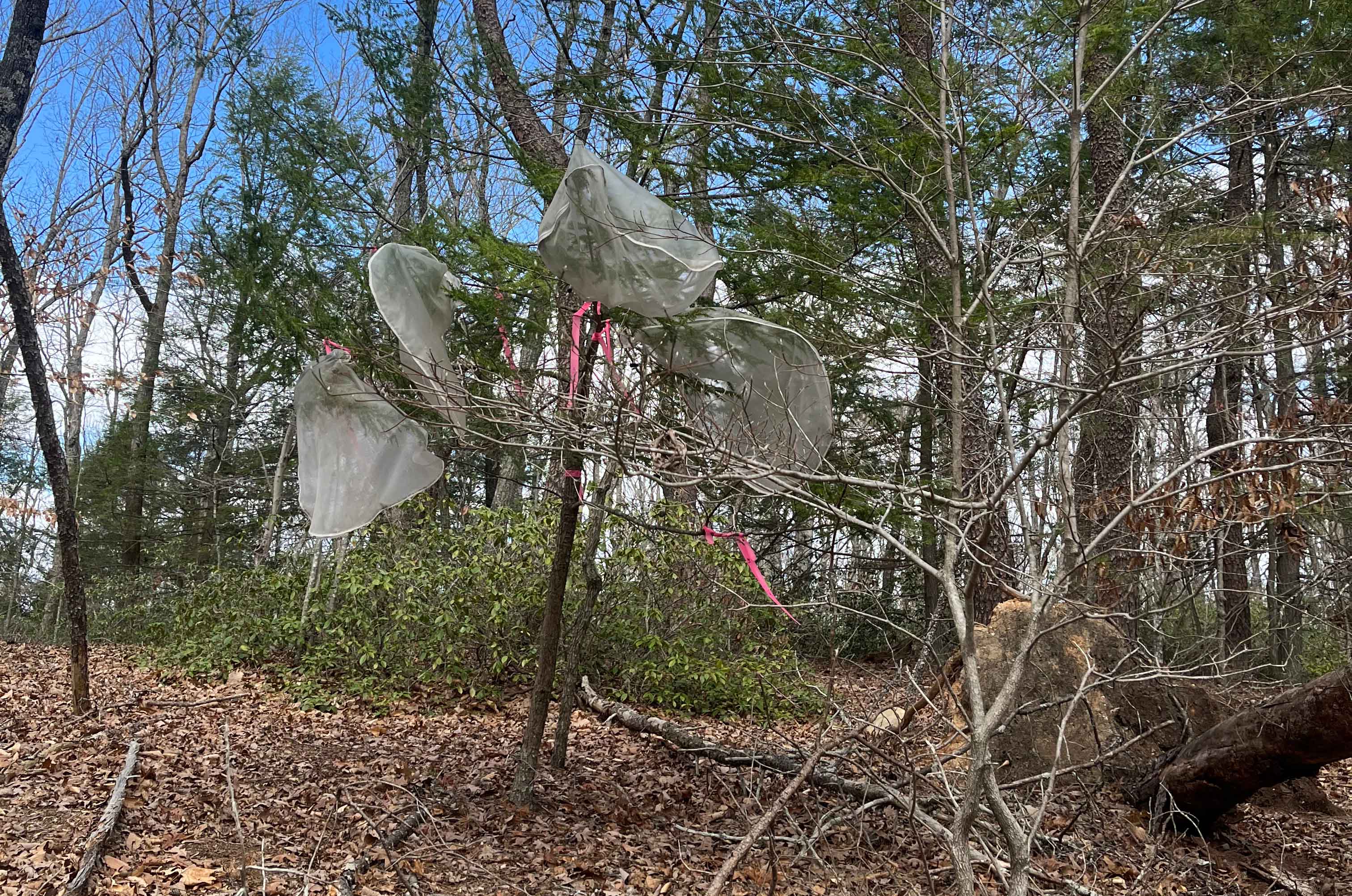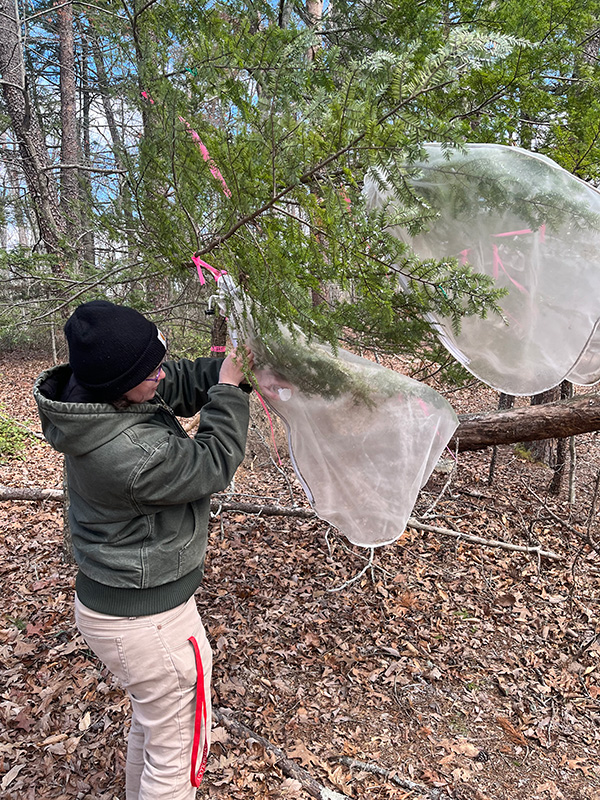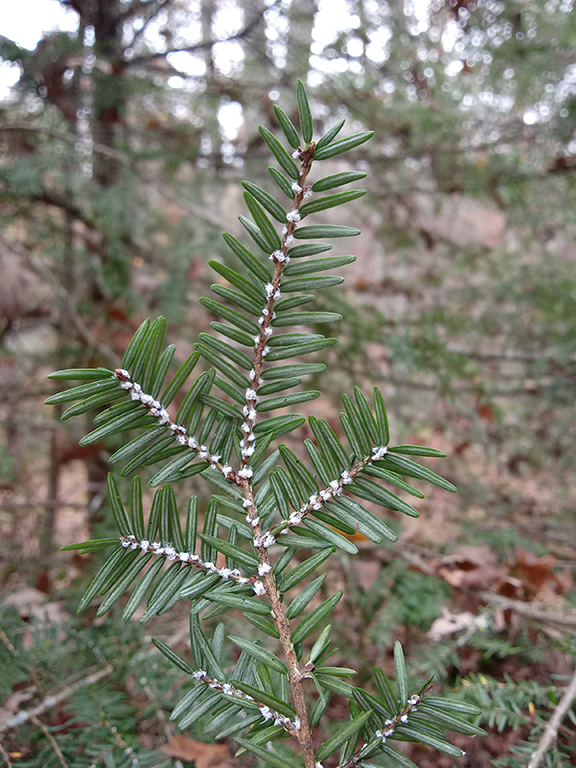
 Department of Conservation and Recreation
Department of Conservation and Recreation
Conserve. Protect. Enjoy.
 Department of Conservation and Recreation
Department of Conservation and Recreation
By Emi EndoPosted June 06, 2022
To combat an invasive pest that has been decimating eastern hemlock trees in Virginia, researchers enlisted a predatory beetle that feeds on those pests.
In studies at sites including James River State Park in Gladstone, Virginia, and Pinnacle Natural Area Preserve in Russell County, scientists in 2005 began introducing a predator beetle to eastern hemlock trees infested with the hemlock woolly adelgid (Adelges tsugae), a tiny aphid-like insect.

They found that the beetles, Laricobius nigrinus, who must feed on these adelgids, can help to bring down the pest population. But there’s a catch – the beetles don’t work all year.
“This beetle is only present for a certain period of time, and then it goes down in the soil and no longer feeds on the adelgid,” said Carrie Preston, a doctoral student in the Department of Forest Entomology at Virginia Tech, who is conducting a study on biological controls for the invasive species. “When it's no longer feeding on the adelgid, we don't have predators that specialize on feeding on the adelgid, so the adelgid is able to bounce back.”

What other troops can be recruited for the cause?
A tiny silver fly, about the size of a fruit fly, called Leucotaraxis, also preys exclusively on adelgids. “The silver fly is really pretty, they’ve got this silverish blue color,” she said.
This spring, Preston released silver flies on adelgid-infested branches at James River State Park. With the silver flies preying on the adelgid when the beetle is not, the hope is to create “constant pressure on the adelgid throughout its entire lifecycle,” she said. “The goal of my study is to see: If we have both of these predators, how does that impact the adelgid populations on those trees? From that predation, how does that affect the tree – does it actually help?”

The eastern hemlock needs all the assistance it can get.
All eastern hemlock forests in Virginia are highly threatened by adelgids, which causes extensive mortality in many stands. First spotted near Richmond in the early 1950s, the invasive species has now spread through the eastern U.S.
Adelgids create a white, waxy substance that resembles cotton (where the name “hemlock woolly adelgid” comes from) over themselves and lay their eggs in these ovisacs. The insects insert their long, straw-like mouth parts into the tree and feed on the tree’s sap.

Preston, who began this research in 2019, said she has always been interested in invasive species. “It just boggles my mind how a species from a different area is able to survive in a new location and cause such a problem. This tiny little insect – this adelgid is so problematic. I love to try to understand what we can do to try and protect our ecosystems.”
Categories
Native Plants | Natural Heritage
Tags
native plants

